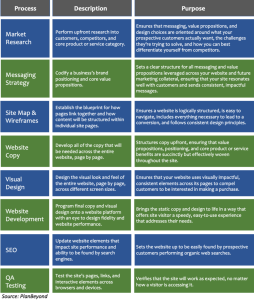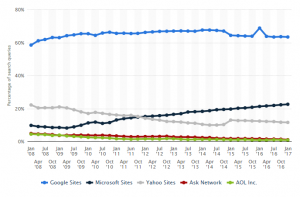— August 30, 2017

PatternPictures / Pixabay
It’s easy enough to read article after article of performance review tips, tricks and advice, but the truth is every company and situation requires a different approach. Even if a new technique for better performance management is needed, the same tactic doesn’t work for everyone. That’s why it’s beneficial to discuss not only what companies SHOULD do, but what they actually ARE doing to enhance processes and make reviews better for all parties involved.
Gallup’s recent research that shows only 2 in 10 employees strongly agree their performance is managed in a way that motivates them to do outstanding work. To ensure you better manage your employee’s performance, let’s take a look at some examples of how real companies are changing their process. Maybe you’ll find details you can implement within your own organization.
Performance Review Example #1: GE
Many companies are beginning to see the merit in losing year-end or annual performance reviews. One major company taking notice of this much needed change is General Electric. Over the past year, they have transferred their once cut and dry review process into a motivating way to guide employees rather than just critique them. GE Managers and employees still meet once a year, but it is now a meeting with true purpose: employee’s future goals. In addition, to help with regular feedback, the innovation giant is launching its own in-house performance app to help facilitate everyday, regular feedback. The app is now used by more than 80,000 people.
“It existed in more or less the same form since I started at the company in 1979. But we think over many years it had become more a ritual than moving the company upwards and forwards.” –Susan Peters, Head of Human Resources, GE
Motivate Employees Like GE:
Building motivation into your performance management strategy can happen in roundabout ways. For example, after releasing a policy change or strategy pivot, make sure everyone affected receives notice and let them specifically know how they can share feedback with you. Employees will be more motivated to tackle the changes if they feel like how those changes affect them is heard by higher ups. Lose the dictatorial leadership style, and remind employees their feedback is welcome through your performance review system. Soliciting upwards feedback can take motivation a step further by empowering your employees and making them feel heard.
“ 97% of employees believe communication impacts tasks daily. Plus, approaching employees creates a checks and balances. A manager might believe his or her idea is the best approach to a problem or situation, but those who are most affected may bring up a point that for which hasn’t been accounted.” – Maren Hogan, CEO of Red Branch Media
Performance Review Example #2: Cargill
It’s no wonder they have struggled to fully engage and motivate their workforce as a company with thousands of employees worldwide. However, with the help of their new system, they are finding it to be easier than ever. Starting in 2012, Cargill introduced a strategic process for everyday performance management. This system was specifically designed to incorporate encouragement, feedback and motivation into everyday conversations while on the job. Instead of focusing on the past, they have since been able to focus on the future of their employees and the company as a whole to better work towards goals and set milestones while giving accurate and helpful constructive feedback.
Give Constructive Feedback Like Cargill:
43% of leaders find it stressful to give corrective feedback. Whether you feel the same or not, the truth is, every employee needs it. Liane Davey (@LianeDavey), VP at Knightsbridge Human Capital warns against approaching critiques when still feeling the stress.
“Unfortunately, if you’re stressed and anxious when delivering feedback, it will translate into poor communication (often abruptness or rambling), which will make it hard for the recipient to hear, understand, and apply the value of the information you’re delivering. Worse, your discomfort will be mirrored by the recipient and the interaction might actually erode his or her trust in you instead of enhancing it.”
TIP: Schedule a time to discuss and deliver the constructive feedback to the employee at a later date so you’ve had time to get your emotions in check. Delivering negative feedback to a worker in an emotionally charged session won’t be effective and can leave your employee feeling disengaged and unmotivated.
TIP: Remember constructive feedback is used to help the employee identify what went wrong and how the can handle the situation better in the future. Place your findings and suggested process in writing so the employee has clear, written directions on how this situation was assessed and the proposed solution. This way, there are no miscommunications and the “he said, she said” or “I thought you said to do this” game can be avoided.
TIP: Tailor your communication to suit the employee’s work style and unique motivators. An employee who is adamant about career progression might respond better to constructive feedback if you explain how their future role in the company is affected by their action or perhaps if they take a different route next time, they’ll be making progress towards a specific goal. Knowing what drives the employee will help you tie constructive feedback to their actual ambitions within your company, propelling their engagement and productivity even more.
Performance Review Example #3: Eli Lilly
Eli Lilly is one of the top pharmaceutical companies in the world. And, their performance management process is equally as amazing. Having always been big on the concept of HR best practices, Eli Lilly stuck to their mission of implementing progressive benefits and perks by encompassing the theme of trust among their employees. This process is meant to empower employees to take initiative while letting their voices and ideas be heard. As a result, bonds between supervisors and subordinates strengthened. Considering that employees who can work with their leadership to develop goals are nearly 4x as likely to be engaged as other employees, it’s safe to say that their company and brand will continue to grow because of this decision.
Build Trust With Your Employees Like Eli Lilly:
One in three employees have stated they feel that their employer is not always honest and truthful with them. This could result from a number of things; micromanaging, empty promises to employees or even lack of feedback. About that feedback… 89% of employees want managers to be more direct! Being direct correlates to being honest, which in turn builds trust. Employees need to trust their employers for a healthy work environment to be possible.
“The emphasis in recent years on employee wellness is a step in the right direction, but the psychological factors are often overlooked,” says David W. Ballard , head of APA’s Center for Organizational Excellence . “It’s clear that an organizational culture that promotes and supports openness, honesty, transparency and trust is key to a healthy, high-performing workplace.”
Performance Review Example #4: Adobe
This design technology software company doesn’t just talk the talk when it comes to performance reviews. Since 2012, Adobe has been using a process that focuses on developing ongoing conversations between managers and employees, all with the focus of engaging and empowering. Their approach includes elements of setting priorities, understanding the role of HR and providing resources.
As a result, Adobe has seen a 10% increase in the number of employees who say they receive ongoing feedback that helps their performance. Moreso, their voluntary turnover rate has dropped by 30% and they have been able to save more than 100,000 manager hours each year.
Provide Ongoing Feedback Like Adobe:
Ongoing feedback produces amazing performance results because it’s timely and mistakes can be quickly fixed! When managers are able to nip problems in the bud immediately, they spare the mistake being made again and again or to the point where the damage is too large to mend. Ongoing feedback is also great in on-the-job training for new and experienced employees. Did you know employees are thought to have a 12% increase in productivity from ongoing feedback?
Performance review systems with notifications and reminders are a must for busy managers on the go! Remembering to deliver ongoing feedback is much easier when you’re being held accountable. It’s why many turn to iRevü!
“If you take the time to communicate and offer feedback on a continuous basis, there will be less surprises. For instance, you will know which employees are struggling with particular projects, while also being more aware of which employees understand the concepts of the project and are interested in mentoring peers. The chances of miscommunication between leadership and subordinates diminishes and the lines of better communication replace it. Better understanding on all those fronts will mean better, possibly faster, work.” – Michael Heller on Business 2 Community HR
Performance Review Example #5: Accenture
Accenture wants to rid itself of the annual review and completely overhaul its entire performance management process. What was their solution? Make it more accurate. This company began measuring and tracking interactions between managers and employees to better focus on immediate development. No more “annual” reviews and no more “ranking.” Like others on this list, they are using application technology to their advantage, helping the internal organization efficiently relay feedback.
How To Get Accurate Like Accenture:
Part of having an accurate performance management process is being able to glean insight from your existing workforce to make better decisions regarding the total workforce… and future workforce. Employee performance data can be used to assess the performance of your team in comparison to overall business goals giving you the insight needed to make accurate performance assessments and predictions.
Problems with employee productivity or revenue loss can be cause for major concerns in an organization. How are you supposed to fix these problems if you don’t know they exist in the first place? Focus on accurate performance issues with the help of performance data from your system. Access historical performance data and compare and contrast how that data relates to business performance. What you find may shock you, but it will definitely help you hone in on areas that have been neglected!
Performance Review Example #6: Google
As a famous innovator, it’s no surprise that Google’s performance review process is nontraditional compared to other companies. Ranking and sticking to an annual timeline have never been a part of their technique. Instead, they focus on goal-setting and motivating employees to meet those goals, all while looking at specific objectives and key results (OKRs). All these elements along with the addition of measuring performance, peer-to-peer feedback and working to remove bias make the perfect combination for the great review system.
“We need people to know how they’re doing, and we’ve evolved what might at first seem like a zanily complex system that shows them where they stand. Along the way, we learned some startling stuff. We’re still working on it, as you’ll see, but I feel pretty confident we’re headed in the right direction. And with any luck I can save you some of the headaches and missteps we had along the way.”– Laszlo Bock, SVP, People Operations, Google
Setting Performance Objectives Like Google:
Ongoing performance review conversations are the perfect opportunity to set goals, define how the goals will be met and share goal progress and completion. 60% of employees state they need to interact with at least 10 other employees on any given day, so making sure these goals don’t get their wires crossed is crucial. Consider investing in tech tools to help your employees accomplish their goals. Check out the top most used tools Business News Daily highlights:
- Tablets for work
- Project management tools
- Productivity apps
These can be used in conjunction with performance review software to help your employees reach their performance goals in between reviews.
TIP: Better yet! Find a system that has an app or is mobile responsive so employees can stay motivated and on top of their performance on the go. We know of just the one!
If you’ve been paying attention, all of these companies focus on one key element: feedback. No matter how you go about doing it, delivering feedback is essential when reworking your performance review process. Some of these tactics may not be the best for you and your company, but that shouldn’t stop you from trying to provide the best process and resources to all your employees.
Business & Finance Articles on Business 2 Community
(123)
Report Post








